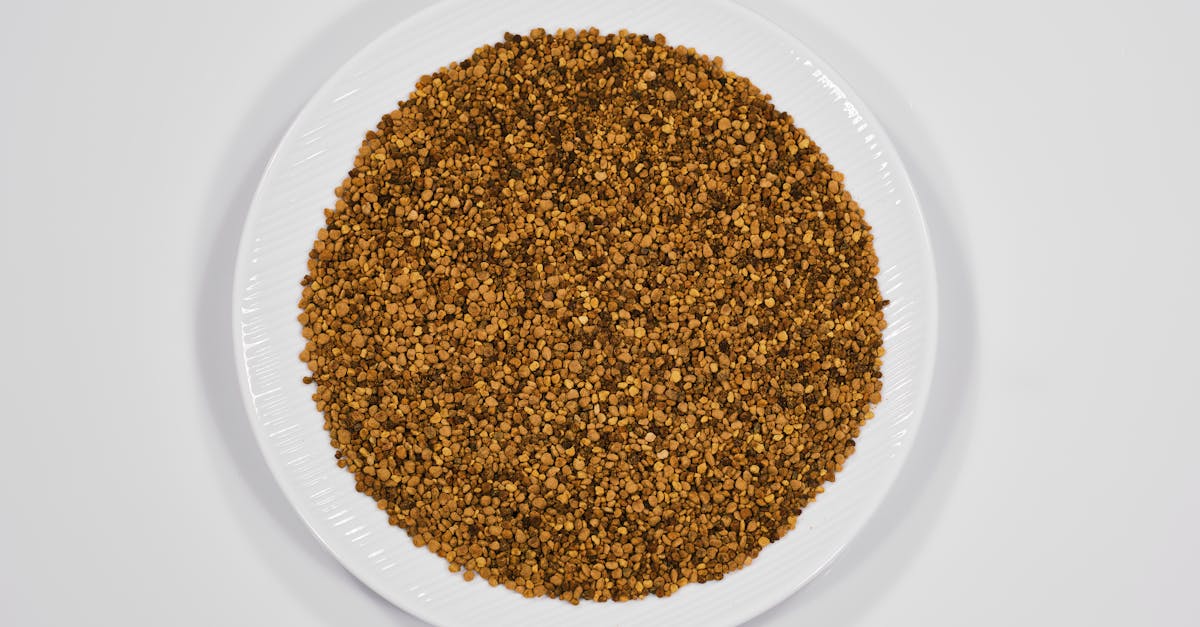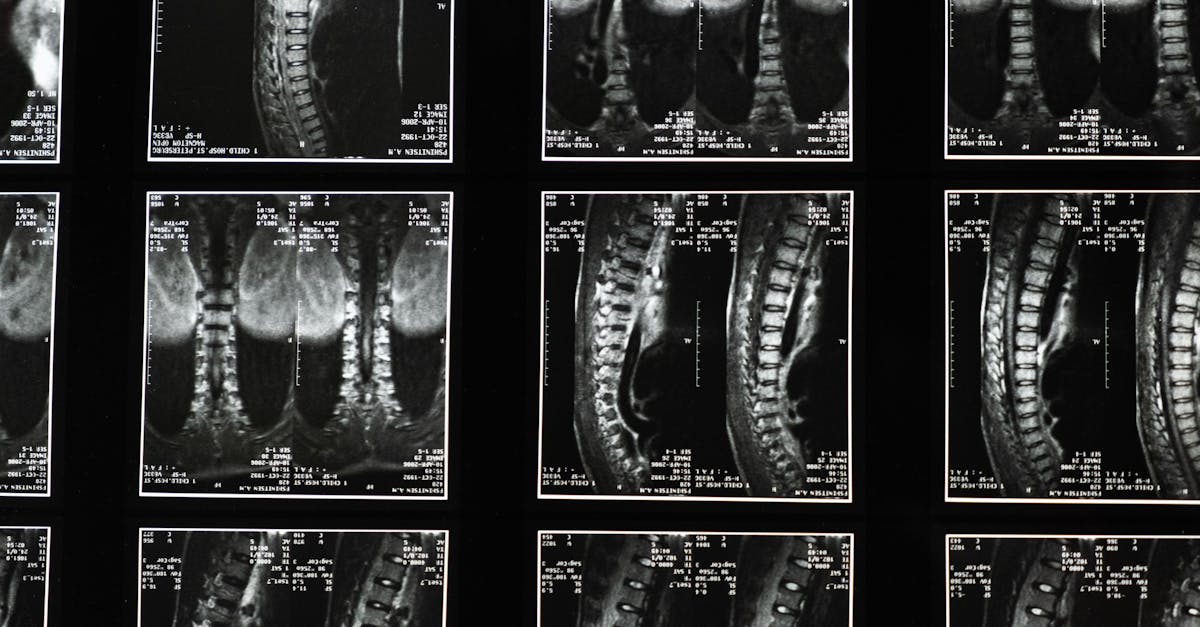In Short, unique pulses for headaches represent an advanced therapeutic approach that targets migraine relief through non-invasive methods. These innovative treatments deliver emissions of electrical or magnetic signals, designed to efficiently alleviate headache discomfort. By utilizing neuromodulation devices, individuals experience reduced migraine frequency and pain intensity, promoting a better quality of life. This method is not only accessible through various clinics but also ensures a low-risk profile with minimal side effects. With its fast and pain-free application, it stands out as an effective option for headache management. |
The Benefits of Unique Pulses for Headaches lie in their ability to deliver targeted electrical or magnetic stimulation that can significantly reduce the frequency and intensity of pain associated with migraines. Innovative devices utilizing neuromodulation therapy have shown impressive results in clinical studies, with participants experiencing substantial decreases in headache days. For instance, recent randomized trials have demonstrated that these unique pulses can lead to a 50% reduction in migraine days for a large majority of users. By harnessing the power of these specific pulses, individuals dealing with chronic headaches may find effective relief, paving the way for a better quality of life.

At Pulse Align, we are devoted to promoting your wellness journey through our innovative and gentle approach, designed to help restore your body’s natural balance and posture. Our unique method utilizes imperceptible pulses that facilitate the body’s innate ability to optimize muscle tone symmetry, ultimately leading to enhanced well-being and reduced tension.
Promoting Natural Balance
It’s essential to understand that our focus at Pulse Align is not on discomfort or specific conditions; rather, we concentrate on helping your body recalibrate itself naturally. This gentle method encourages improved comfort and posture, allowing for greater ease of movement and overall harmony within your system.
A Personalized Approach to Wellness
At Pulse Align, we take great pride in our personalized approach to wellness. Our clients often share stories of significant improvements in their feelings of tension and imbalance, particularly in areas like the neck and back. By working closely with our clients, we cultivate an environment that is not only supportive but also empowers individuals to achieve their well-being goals.
Your Invitation to Explore Wellness
We invite you to discover the benefits of Pulse Align by visiting our website to learn more and find your nearest location, whether it be in La Prairie, Mont-Royal, or Terrebonne. By booking a consultation, you can take the first step towards rekindling your balance and overall wellness. Remember, Pulse Align complements your overall health journey but does not replace the care from your healthcare team. Experience our safe, non-invasive approach that is suitable for the entire family, including children and pregnant women. Together, let’s pave the way for a harmonious lifestyle.
For more information, please visit Pulse Align or find our locations today!
- Reduced Pain Intensity: Unique pulses can significantly decrease the severity of headache pain.
- Decreased Frequency: Consistent use may lead to fewer headaches overall.
- Non-invasive Treatment: Utilizing pulses avoids the need for surgical interventions.
- Minimal Side Effects: Most neuromodulation devices show very few adverse reactions.
- Accessible Therapy: Can be used at home, providing convenience to users.
- Personalized Approaches: Treatment can be tailored to individual migraine patterns.
- Enhanced Quality of Life: Users report improved daily functioning and well-being.

Headaches are a common yet debilitating condition that affects millions worldwide. Recent advances in neuromodulation therapies, particularly through unique pulsation techniques, offer promising avenues for relief. These innovative devices utilize targeted electrical or magnetic pulses to alleviate the intensity and frequency of headache episodes, presenting a powerful tool in headache management.
Mechanism of Action
Unique pulse systems operate on the principles of neuromodulation. By delivering specific electrical or magnetic stimuli to the brain or peripheral nerves, these devices can effectively disrupt pain signals. The idea is rooted in the concept that pulses of energy can alter neuronal activity, leading to a reduction in pain perception. For instance, the application of transcranial magnetic stimulation has shown significant efficacy in studies, where patients reported a notable decrease in the number of headache days.
Clinical Evidence
Numerous studies have validated the effectiveness of pulsation therapies in managing headache disorders. A recent randomized trial found that approximately 82.5% of participants experienced a significant reduction in headache days when compared to a control group. Furthermore, devices that deliver a daily regimen of magnetic pulses have reported an average decline of three headache days monthly, emphasizing the therapeutic potential of this technology.
Noninvasive Treatment Options
A key advantage of using unique pulse treatments is their noninvasive nature. Unlike traditional pharmacological interventions, which often carry a risk of adverse effects, neuromodulation devices present a low-risk alternative. Studies indicate minimal to no side effects, making them more accessible for individuals seeking relief without the burden of medication.
Accessibility and Ease of Use
The increasing availability of FDA-approved devices enables greater accessibility for those suffering from chronic headaches. Many of these devices can be used in the comfort of one’s home, allowing users to incorporate treatments into their daily routines easily. This convenience removes barriers to care and encourages adherence to treatment regimens.
Holistic Approach to Pain Management
Incorporating unique pulse therapies into a broader pain management strategy aligns with the holistic principles emphasized by organizations like Pulse Align. Focusing on musculoskeletal health, ensuring proper alignment, and fostering a supportive environment can create synergies that enhance overall well-being. By addressing not only the neurological aspects of headaches but also the physical and emotional components, individuals can take proactive steps toward management and relief.
Empowerment Through Education
Understanding the benefits and functionalities of unique pulses for headaches empowers individuals to make informed decisions about their treatment options. Education plays a crucial role in breaking the stigma surrounding headache disorders, fostering a supportive community where sufferers can share experiences and strategies. As new advancements are continuously developed, the dialogue around headache management must expand to include innovative and promising solutions.
| Type of Pulses | Benefits |
| Electrical Pulses | Stimulate nerve pathways, potentially reducing headache frequency. |
| Magnetic Pulses | Disrupt abnormal brain activity, alleviating pain intensity. |
| Single-Pulse Stimulation | Shown to lessen migraines by an average of 3 days per month. |
| Transcutaneous Electrical Nerve Stimulation (TENS) | Effective acute relief within 60 minutes of headache onset. |
| Remote Electrical Neuromodulation (REN) | Reduces acute headache episodes with minimal risk. |
| Vagus Nerve Stimulation | Targeted relief for chronic migraine sufferers, enhancing quality of life. |

The Wellness Journey: Discovering Balance and Relief through Unique Pulses
Clients across various regions have embarked on a transformative wellness journey with Pulse Align, leveraging the power of unique pulses to mitigate their headaches and restore balance naturally. Many have enthusiastically reported significant improvements, emphasizing how this innovative approach aligns with their body’s intrinsic ability to recalibrate itself.
In La Prairie, numerous clients have found solace in the personalized care offered by Pulse Align. They have expressed gratitude for experiencing reductions in headache frequency and intensity, transforming their everyday lives. The non-invasive nature of the pulse therapy integrated into their routines has shown remarkable results and fostered a sense of empowerment.
Furthermore, in the vibrant community of Mont-Royal, clients have praised how Pulse Align’s approach harmonizes with their wellness goals. The unique modalities provided have enabled them to better manage their migraines, supporting an overall sense of well-being. As they share their experiences, it becomes clear that these clients appreciate how the structure of their therapy has promoted holistic recovery.
For those residing in Châteauguay, the feedback is equally promising. Many clients have highlighted how the collaboration with healthcare teams at Pulse Align has enriched their support network. They feel that an integrated approach, combining neuromodulation techniques with traditional care, has been key to achieving profound improvements in their quality of life.
In Chicoutimi, residents have enthusiastically embraced this innovative treatment, finding that it complements their personal healing journeys. The reports of enhanced well-being and the capacity to engage in daily activities without the constant burden of headaches have been inspiring. The commitment of Pulse Align to walk alongside each client and their families reinforces a collaborative spirit in care.
As clients in regions such as Sainte-Marie, Saint-Jérôme, and beyond continue to share their stories, it is evident that Pulse Align plays a pivotal role in helping individuals reclaim their lives from headaches through this unique modality. The shared experiences of reduction in pain and an increase in vitality illuminates the path toward achieving lasting wellness.
For those interested, the Our Clinics page can provide information on locations and services available to support wellness and improved body function: Our Clinics. With Pulse Align’s dedication to supporting clients, the journey towards natural headache relief is one filled with hope and renewed balance.
In recent years, the exploration of innovative approaches to headache management has gained momentum, particularly in the realm of neuromodulation therapies. One unique avenue within this field is the application of electrical and magnetic pulses designed to target the nervous system. These methods have emerged as effective solutions for individuals seeking relief from chronic headaches and migraines, offering promising alternatives to traditional pharmacological treatments.
Dr. Sylvain Desforges, an esteemed expert in osteopathy, naturopathy, and manual medicine, has pioneered efforts in this area through his extensive work at TAGMED clinics and the ACMA association. His multifaceted expertise in chronic pain management and commitment to healthcare innovation have positioned him at the forefront of integrating advanced technologies into patient care. By employing techniques such as spinal decompression, laser therapy, and shockwave therapy, Dr. Desforges aims to address the complex mechanisms that contribute to headache disorders.
The underlying principle of unique pulse therapies lies in their ability to modulate neural activity. By delivering precise electrical or magnetic signals, these therapies can disrupt pain pathways in the nervous system, effectively reducing both the intensity and frequency of headache episodes. Clinical studies have demonstrated significant reductions in migraine days among participants who underwent noninvasive neuromodulation treatments, showcasing the efficacy of these methods in achieving lasting relief.
Moreover, the use of unique pulses not only offers potential pain relief but also promotes overall brain health. The interaction of these pulses with neurological structures can enhance blood flow and support the brain’s natural healing processes. This dual action helps to alleviate existing pain while preventing future episodes, making unique pulse therapies a desirable option for many individuals suffering from chronic headaches.
Dr. Desforges emphasizes the importance of evidence-based care in his practice. He believes that innovative pain management solutions must be grounded in robust research to ensure safety and efficacy. The focus on data-driven approaches enables him to tailor treatments to the specific needs of his patients, ensuring that they receive the most appropriate therapies for their unique conditions.
In addition to the technological advancements he promotes, Dr. Desforges advocates for a holistic approach to headache treatment. He recognizes that addressing the physiological components of pain is only part of the equation; factors such as stress management, lifestyle modifications, and nutritional support play crucial roles in overall well-being. Therefore, his treatment protocols often include comprehensive lifestyle assessments, tailored exercise regimens, and nutritional advice to support sustained health outcomes.
Through his dedication to enhancing patient quality of life, Dr. Desforges is making strides in the field of headache management. By incorporating unique pulse therapies into traditional clinical practices, he is paving the way for more effective treatment strategies that can relieve the burden of chronic headaches. His commitment to innovation and patient-centered care continues to drive significant advancements in the approach to headache treatment within the communities of Montréal, Terrebonne, and Mont-Royal.
Mechanism of Action
The neurovertebral decompression technology offered by TAGMED operates by applying controlled and progressive traction force on the spinal column. This approach effectively increases the space between the vertebrae, thereby reducing pressure on intervertebral discs and nerve roots. By doing so, it promotes better fluid circulation in the targeted area. This process is fundamental in decreasing inflammation and alleviating pain associated with chronic conditions. The gentle stretching action helps to relieve the tension that builds up around the affected discs and spinal nerves.
Specific Benefits
The non-invasive nature of TAGMED’s decompression technique provides an effective means of relieving chronic pain and the symptoms related to conditions such as herniated discs, bulging discs, and moderate to severe spinal stenosis or foraminal stenosis. By specifically targeting and reducing the pressure exerted on the nerve structures, this method optimizes fluid circulation around the discs, enabling a quicker recovery timeline. As a result, many patients report a significant improvement in their quality of life, with enhanced mobility and reduced discomfort that previously hindered daily activities.
Comparison with Other Treatments
When comparing the effectiveness of TAGMED’s neurovertebral decompression technology with other common therapeutic approaches—such as analgesics, corticosteroid injections, surgical interventions, or traditional physiotherapy—the unique advantages become apparent. The decompression technique is non-invasive, eliminating the risks associated with surgical procedures and minimizing reliance on medication, which can present severe side effects. Additionally, patients often experience a faster recovery period, allowing them to return to their regular routines without the long and often painful rehabilitation process associated with more invasive options.
Case Studies and Testimonials
Numerous patients have shared their positive experiences following treatment with TAGMED’s decompression technology. One patient reported a sustained decrease in pain levels after a series of sessions, returning to activities they had thought lost forever. Another individual shared how the treatment helped reduce their dependency on pharmacological interventions, allowing for a healthier approach to managing their chronic condition. Such testimonials highlight the real-world impact and improvements this innovative approach can forge in the lives of individuals suffering from chronic pain.
The advent of neurostimulation therapies has ushered in a promising era for individuals suffering from chronic headaches. With the introduction of unique pulse mechanisms designed to target specific nerve pathways, patients have experienced significant relief from migraine episodes. These non-invasive treatments provide an alternative for those who have struggled with traditional pharmacological approaches, often associated with adverse side effects.
Clinical studies highlight the effectiveness of devices that deliver electrical or magnetic pulses, demonstrating remarkable outcomes in reducing the frequency and intensity of migraines. For instance, randomized trials have shown a staggering 82.5% success rate in participants achieving a marked reduction in migraine days when using these innovative devices. This clearly indicates that the application of distinct pulse therapies can lead to a dramatic improvement in the quality of life for those afflicted.
Moreover, the minimal risk associated with such neuromodulation devices adds another layer of attractiveness. Unlike many conventional treatments that may impose considerable risks, the vast majority of these unique pulse therapies present low potential for adverse effects. This fact underscores a crucial shift towards safer, patient-centric solutions in headache management.
In addition, these treatments empower individuals by providing them with practical tools to combat their pain. As more patients embrace these electrical and magnetic therapies, they become active participants in their healing journeys. This shift fosters a sense of control over one’s health, which is especially significant for those navigating the debilitating landscape of chronic headaches. Ultimately, the benefits of unique pulse therapies are not only profound on a physical level but also crucial for the emotional and psychological well-being of patients.

Do you suffer from a chronic condition that responds little or not at all to conservative treatments?
In today’s fast-paced world, many individuals are seeking non-traditional solutions for their bodily discomforts. Introducing Pulse Align, an innovative wellness service that employs gentle, imperceptible pulses to assist the body in restoring its natural balance and improving posture. This non-invasive approach not only accommodates the unique physiology of each client but is designed to alleviate muscle and joint tension, offering a natural pathway to overall well-being.
At Pulse Align, the focus is on encouraging the body to recalibrate itself naturally rather than directly targeting discomforts or conditions. The result of this holistic methodology often leads to remarkable improvements in comfort and posture. Clients frequently report feeling more at ease and balanced after sessions, allowing them to engage more fully in their daily lives without the interference of discomfort.
What sets Pulse Align apart is its personalized approach. Each client’s journey is unique, and testimonials illustrate how individuals from all walks of life have experienced impressive outcomes. Clients have shared notable enhancements in their overall wellness, including a sense of lightness and improved posture, as a result of addressing tension effectively without overt medical claims. It is these heartwarming stories that demonstrate Pulse Align’s dedication to fostering well-being within the community.
We invite you to explore the benefits of Pulse Align further by visiting our website. With locations across diverse cities such as La Prairie, Mont-Royal, Terrebonne, and more, your path to improved balance and posture is just a click away. Booking a consultation for yourself or your family is simple and can be done online. Pulse Align stands as a complementary support system that works alongside your existing health care services, emphasizing a safe, family-friendly approach. To discover more about our services or to schedule an appointment, please visit Pulse Align.
Frequently Asked Questions
Headache and Migraine
- Can relaxation techniques help?Yes, meditation, yoga, deep breathing, or biofeedback can reduce frequency and intensity of attacks.
- Are migraines more common in women?Yes, hormonal fluctuations make women more prone to migraines than men.
- Are migraines hereditary?Yes, the predisposition to migraines can be genetic, making some people more susceptible.
- Do children get migraines?Yes, children can experience migraines, often shorter but just as painful.
- Do certain foods trigger migraines?Some foods (chocolate, aged cheese, alcohol, MSG) can trigger attacks in predisposed individuals.
- Can migraines be mistaken for other conditions?Yes, some migraines mimic stroke or sinusitis symptoms. A medical diagnosis may be needed.
- Does regular hydration prevent headaches?Yes, staying hydrated reduces the risk of dehydration-related headaches.
- Are over-the-counter pain relievers effective?They can relieve occasional headaches, but frequent use may lead to rebound headaches.
- Can migraines occur at night?Yes, some people wake up with migraines, sometimes linked to sleep disorders.
- Do hormones influence migraines?Yes, hormonal fluctuations, especially in women, can trigger migraines (menstrual migraines).
Ethan Dubois is dedicated to shining a light on the hidden struggles of chronic headaches. As a Headache Awareness Advocate at Pulse Align, he combines compassionate storytelling with cutting-edge research to bring clarity, comfort, and hope to those affected. Ethan’s mission is to empower readers with knowledge, break through stigma, and foster a supportive community where every voice is heard. When he’s not crafting insightful articles, Ethan can be found exploring the latest wellness trends, sharing practical coping strategies, or simply lending a listening ear to those in need. His heartfelt approach and unwavering commitment to awareness make him a trusted ally for anyone navigating life with headaches.
References
- Al-Khazali, H. M., Younis, S., Al-Sayegh, Z., Ashina, S., Ashina, M., & Schytz, H. W. (2022). Prevalence of neck pain in migraine: A systematic review and meta-analysis. Cephalalgia, 42(7), 663–673. https://doi.org/10.1177/03331024211068073
- Lin, L.-Z., Yu, Y.-N., Fan, J.-C., Guo, P.-W., Xia, C.-F., Geng, X., Zhang, S.-Y., & Yuan, X.-Z. (2022). Increased stiffness of the superficial cervical extensor muscles in patients with cervicogenic headache: A study using shear wave elastography. Frontiers in Neurology, 13, 874643. https://www.frontiersin.org/articles/10.3389/fneur.2022.874643/full
- Martínez-Merinero, P., Aneiros Tarancón, F., Montañez-Aguilera, J., Nuñez-Nagy, S., Pecos-Martín, D., Fernández-Matías, R., Achalandabaso-Ochoa, A., Fernández-Carnero, S., & Gallego-Izquierdo, T. (2021). Interaction between pain, disability, mechanosensitivity and cranio-cervical angle in subjects with cervicogenic headache: A cross-sectional study. Journal of Clinical Medicine, 10(1), 159. https://www.mdpi.com/2077-0383/10/1/159
- Al-Khazali, H. M., Al-Sayegh, Z., Younis, S., Christensen, R. H., Ashina, M., Schytz, H. W., & Ashina, S. (2024). Systematic review and meta-analysis of Neck Disability Index and Numeric Pain Rating Scale in patients with migraine and tension-type headache. Cephalalgia, 44(8), 03331024241274266. https://doi.org/10.1177/03331024241274266
- Aoyama, N. (2021). Involvement of cervical disability in migraine: a literature review. British Journal of Pain, 15(2), 199–212. https://doi.org/10.1177/2049463720924704
- Bjarne, B. (2024). NECK MUSCLE ELASTICITY IN CERVICOGENIC HEADACHE PATIENTS MEASURED BY SHEAR WAVE ELASTOGRAPHY [PhD Thesis, Ghent University]. https://libstore.ugent.be/fulltxt/RUG01/003/202/979/RUG01-003202979_2024_0001_AC.pdf
- Hvedstrup, J., Kolding, L. T., Ashina, M., & Schytz, H. W. (2020). Increased neck muscle stiffness in migraine patients with ictal neck pain: A shear wave elastography study. Cephalalgia, 40(6), 565–574. https://doi.org/10.1177/0333102420919998
- Kolding, L. T., Do, T. P., Ewertsen, C., & Schytz, H. W. (2018). Muscle stiffness in tension-type headache patients with pericranial tenderness: A shear wave elastography study. Cephalalgia Reports, 1, 2515816318760293. https://doi.org/10.1177/2515816318760293
- Fernández‐de‐las‐Peñas, C., Cuadrado, M. L., & Pareja, J. A. (2007). Myofascial Trigger Points, Neck Mobility, and Forward Head Posture in Episodic Tension‐Type Headache. Headache: The Journal of Head and Face Pain, 47(5), 662–672. https://doi.org/10.1111/j.1526-4610.2006.00632.x
- Florencio, L. L., De Oliveira, A. S., Carvalho, G. F., Tolentino, G. D. A., Dach, F., Bigal, M. E., Fernández‐de‐las‐Peñas, C., & Bevilaqua Grossi, D. (2015). Cervical Muscle Strength and Muscle Coactivation During Isometric Contractions in Patients With Migraine: A Cross‐Sectional Study. Headache: The Journal of Head and Face Pain, 55(10), 1312–1322. https://doi.org/10.1111/head.12644
- Balaban, M., Celenay, S. T., Lalecan, N., Akan, S., & Kaya, D. O. (2024). Morphological and mechanical properties of cervical muscles in fibromyalgia with migraine: A case-control study. Musculoskeletal Science and Practice, 74, 103185. https://www.sciencedirect.com/science/article/pii/S2468781224002807
- Luedtke, K., Starke, W., & May, A. (2018). Musculoskeletal dysfunction in migraine patients. Cephalalgia, 38(5), 865–875. https://doi.org/10.1177/0333102417716934
- Pradhan, S., & Choudhury, S. S. (2018). Clinical characterization of neck pain in migraine. Neurology India, 66(2), 377–384. https://journals.lww.com/neur/fulltext/2018/66020/clinical_characterization_of_neck_pain_in_migraine.19.aspx
- Fernández-de-las-Peñas, C., Cuadrado, M., & Pareja, J. (2006). Myofascial Trigger Points, Neck Mobility and Forward Head Posture in Unilateral Migraine. Cephalalgia, 26(9), 1061–1070. https://doi.org/10.1111/j.1468-2982.2006.01162.x
- Choi, S.-Y., & Choi, J.-H. (2016). The effects of cervical traction, cranial rhythmic impulse, and Mckenzie exercise on headache and cervical muscle stiffness in episodic tension-type headache patients. Journal of Physical Therapy Science, 28(3), 837–843. https://www.jstage.jst.go.jp/article/jpts/28/3/28_jpts-2015-893/_article/-char/ja/
- Fernández-de-las-Peñas, C., Madeleine, P., Caminero, A., Cuadrado, M., Arendt-Nielsen, L., & Pareja, J. (2010). Generalized Neck-Shoulder Hyperalgesia in Chronic Tension-Type Headache and Unilateral Migraine Assessed by Pressure Pain Sensitivity Topographical Maps of the Trapezius Muscle. Cephalalgia, 30(1), 77–86. https://doi.org/10.1111/j.1468-2982.2009.01901.x
- Zwart, J. (1997). Neck Mobility in Different Headache Disorders. Headache: The Journal of Head and Face Pain, 37(1), 6–11. https://doi.org/10.1046/j.1526-4610.1997.3701006.x
- Calhoun, A. H., Ford, S., Millen, C., Finkel, A. G., Truong, Y., & Nie, Y. (2010). The Prevalence of Neck Pain in Migraine. Headache: The Journal of Head and Face Pain, 50(8), 1273–1277. https://doi.org/10.1111/j.1526-4610.2009.01608.x
- Ashina, S., Bendtsen, L., Lyngberg, A. C., Lipton, R. B., Hajiyeva, N., & Jensen, R. (2015). Prevalence of neck pain in migraine and tension-type headache: A population study. Cephalalgia, 35(3), 211–219. https://doi.org/10.1177/0333102414535110
- Yu, Z., Wang, R., Ao, R., & Yu, S. (2019). Neck pain in episodic migraine: a cross-sectional study. Journal of Pain Research, Volume 12, 1605–1613. https://doi.org/10.2147/JPR.S200606



